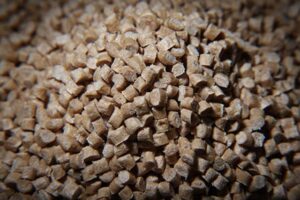When it comes to heating our homes efficiently and sustainably, pellet stoves have gained popularity as an attractive alternative. These stoves burn compressed wood or biomass pellets, providing warmth and comfort.
However, one question that often arises is whether pellet stoves consume a significant amount of electricity. We’re here to offer some insights that will help you make an informed decision about why a pellet stove installation could be right for you.
Understanding the Electricity Consumption
Unlike traditional wood-burning stoves, pellet stoves do rely on electricity to operate various components such as the fuel feed system, fans, and controls. These electrical components play a crucial role in ensuring efficient and controlled combustion, as well as heat distribution throughout the room. Consequently, pellet stoves do consume electricity, but the amount can vary depending on factors such as the model, features, and usage patterns.
Factors Affecting Electricity Usage
- Ignition and Start-Up: When initially ignited, pellet stoves require a higher amount of electricity to ignite the pellets and establish the combustion process. This initial surge in electricity usage is relatively short lived.
- Fuel Feeding and Combustion: Pellet stoves utilize an auger or similar mechanism to automatically feed the pellets into the combustion chamber. This fuel-feeding process relies on electrical motors, which contribute to the overall electricity consumption. Once the pellets are burning, the electricity usage for combustion is typically minimal.
- Heat Distribution: Pellet stoves use fans to circulate the warm air produced by the combustion process throughout the room or the house. These fans require electricity to operate and ensure efficient heat distribution. The amount of electricity used by the fans can vary depending on the stove’s size, power, and desired heat output.
- Control Systems: Pellet stoves often come equipped with digital control panels or thermostats that allow users to adjust the temperature and heat output. These control systems require a small amount of electricity to function.
Tips for Optimizing Electricity Usage
- Choose an Energy-Efficient Model: When selecting a pellet stove, consider models with energy-efficient components, such as low-power fans and motors. Look for stoves with high-efficiency ratings to ensure optimal performance.
- Use the Thermostat Wisely: Utilize the thermostat or temperature control system effectively to maintain a comfortable temperature without excessive cycling of the stove. This can help optimize electricity usage while still enjoying a warm environment.
- Consider Alternate Power Options: In areas prone to power outages, explore pellet stove models that offer battery backup systems or alternative power options. This can ensure heat supply during emergencies or when the electricity supply is interrupted.
With proper maintenance and conscientious operation, pellet stoves provide an efficient and sustainable solution for heating homes.
Contact HB Energy Solutions for all your energy needs. HB Energy Solutions delivers peace of mind.



Join Us Online